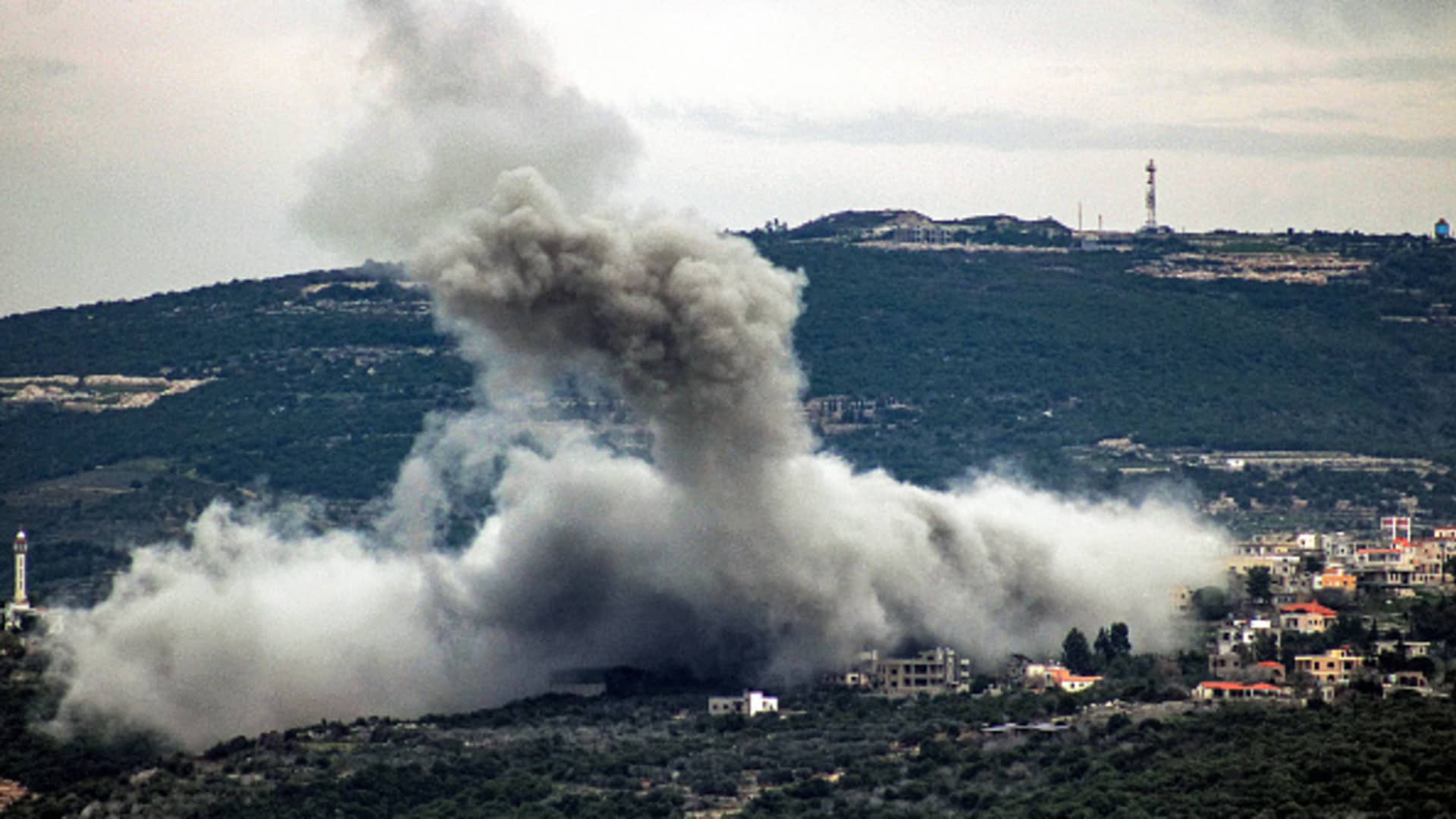Oil prices give up advance as U.S. crude stockpile surges

Smoke billows following Israeli bombardment in the village of Shihin in southern Lebanon near the border with Israel on February 13, 2024, amid ongoing cross-border tensions as fighting continues between Israel and Palestinian Hamas militants in the Gaza Strip.
Kawnat Haju | Afp | Getty Images
Crude oil futures fell Wednesday, giving up gains from earlier in the session as stockpiles surged in the U.S. while demand fell.
The West Texas Intermediate contract for March lost $1.23, or 1.58%, to settle at $76.64 a barrel. The Brent contract for April settled at $81.60 a barrel, down $1.17 or 1.41%.
The move came after commercial crude oil inventories in the U.S. surged by 12 million barrels last week, according to the Energy Information Administration. Oil demand as measured by finished products supplied to the market dropped by 973,000 barrels per day during the same period.
Oil prices had gained 1% earlier in the trading session after Israel launched airstrikes in Lebanon in reaction to rockets fired into northern Israel that killed one person and injured at least seven more.
CIA Director William Burns is in Cairo to facilitate negotiations involving Israel, Hamas, Qatar and Egypt aimed at securing a truce in the fighting in exchange for Hamas releasing hostages.
The shipping giant Maersk is advising its customers that disruptions to shipping in the Red Sea could continue into the second half of 2024. Repeated attacks by Houthi militants, who are based in Yemen and allied with Iran, has forced has forced Maersk to suspend voyages through the Red Sea.
“Unfortunately, we don’t see any change in the Red Sea happening anytime soon,” Charles van der Steene, regional president for Maersk North America, told CNBC
Crude oil futures have repeatedly advanced in recent months on tensions in the Middle East only to give up those gains on worries that there is too much supply in the market as demand falls.
WTI and Brent have gained 3.76% and 3.02%, respectively, in the last week as the war between Israel and Hamas in Gaza rages on with no ceasefire in sight. U.S. crude and the global benchmark are up 6.96% and 5.92% for the year.
— CNBC’s Lori Ann LaRocco contributed to this report.